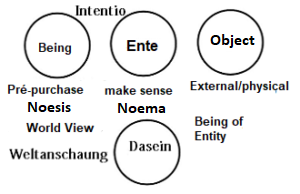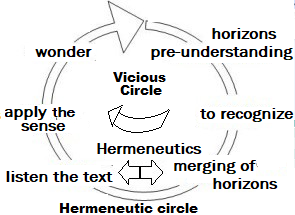
Arquivo para a ‘Information ethics’ Categoria
Dilemmas about peace in Europe and the Middle East
The first major dilemma, although quite obvious, has no support in the mainstream international press: there is a lack of forces that want peace in a way that is equidistant from the countries in conflict.
obvious, has no support in the mainstream international press: there is a lack of forces that want peace in a way that is equidistant from the countries in conflict.
The UN could once play this role, but with infighting between the major powers, this power is limited to speeches and attempts to sensitize the warring parties.
The second major dilemma stems from a serious misconception that is common among warmongers: if you want peace, prepare for war, but the opposite is true: if you want peace, fight for it.
In Eastern Europe, for example, it was reported in the German press that Estonia, which has only 6,500 active military personnel and a population of 1.3 million, had recently simulated an evacuation plan to withdraw the population, although 60% of the citizens say they are willing to defend the country, they have no military preparation for this.
A curious defense structure has been set up on the border of many Baltic countries (photo from the German newspaper DW – Deutsche Welle). It’s not known how effective it will be, but it’s for war, and the proximity of Ukraine and Russia is making several Baltic countries prepare for the worst.
In the midst of Israeli attacks and little public aid, activist forces in Lebanon are taking action, albeit politicized and insufficient for the people in need, according to the same DW newspaper, the Syrian military and opposition forces charge exorbitant amounts for the transport of refugees fleeing the war.
This leads to a third serious dilemma: the red cross and the red crescent (the Arabic version of the red cross) do not accept the religious controversy, but it is this that divides aid forces.
The fourth dilemma is to resolve the ideological and cultural-religious background to the conflicts. During the Cold War (USA vs. Soviet Union), the sociologist Raymond Aron uttered a well-known phrase: “The Cold War was a period in which war was improbable and peace impossible.” The dilemma is now reversed: “Peace is improbable and war is possible.” The imperialist forces at play will not easily give up their disputed interests.
How to think about peace seems like an arid and impractical path, but great thinkers have called for it: “the resistance of the spirit” and as a consequence “the resistance of hope”, Edgar Morin among others point to this path, perhaps the only one to change the mentality of power, to think about solidarity and serving all of humanity, not one group of interest.
Lack of balance and Being
An analysis of Western culture cannot be complete without an understanding of Anger. Various authors have analyzed the issue. Byung-Chul Han recalls that one of the first words in Homer’s Iliad begins: “Aira, Goddess, celebrates the wrathful Achilles, who brought so many sorrows to the Achaeans and cast countless souls into Hades,” but that’s not all.
complete without an understanding of Anger. Various authors have analyzed the issue. Byung-Chul Han recalls that one of the first words in Homer’s Iliad begins: “Aira, Goddess, celebrates the wrathful Achilles, who brought so many sorrows to the Achaeans and cast countless souls into Hades,” but that’s not all.
Aristotle defines anger as: “a desire, accompanied by pain, for perceived revenge, on account of a perceived disregard for an individual or his neighbor, coming from people from whom disregard is not expected” (2.2.1378a31-33) wrote in Rhetoric, but Peter in his essay Anger and Time reframes this psychoanalytical view that reduces the feeling to a mere escape valve for unfulfilled desires and rediscovers it as a 21st century political concept.
The author says: “While the link between spirit and resentment was stable – the demand for justice for the world – whether beyond earthly life or in the history that takes place – was able to take refuge in fictions that have been dealt with in detail here: in the theology of the wrath of God and in the world timotic economy of communism” (Sloterdijk, 2021), which takes on a controversial theme (image is part of book cover).
What is certain is that there is anger on both sides, and the “already” but “not yet” that was discussed in the previous post does not reside in them, because both thoughts are affiliated with modern idealism, and this is the central criticism of Kant and Hegel’s German idealism, they do not point to a new idealism.
In it there is an absence of pain, which precedes com-passion, more than an act of mercy (miseri cordis, of the heart), it is an act of adherence and justification of the existential peripheries, where the pain of justice resides, but as existential it also resides in disillusioned and tired hearts.
Contemplation and the already and not yet, which reaches both the earthly and the divine spheres, requires a vita activa which is that of psychological, family and social equilibrium which does not exclude the other, not infrequently those who defend only earthly or only divine justice, do not have a proactive action that leads to the encounter of pain, widely analyzed in Byung-Chul Han’s “Palliative Society”, eliminated pain by transferring to earthly or divine “paradise”, without our com-passion.
The balance of Being, which is already realized, but not yet (completely), has something to say about justice, the common good and peace.
Sloterdijk, P. (2021) Ira e tempo. Trad. Marco Casanova. Brasil, São Paulo: Estação Liberdade.
Ontology, idealism and truth
Heidegger’s thought must start from the question of Spirit in Hegel, read by Byung-Chul in Introduction to the Phenomenology of Spirit “in terms of the forgetfulness of being” (Heidegger’s central question), he sees it as an “arid self” that finds “its limitation in the being that meets it” (Han, p. 334 quoting Hegel).
of Spirit in Hegel, read by Byung-Chul in Introduction to the Phenomenology of Spirit “in terms of the forgetfulness of being” (Heidegger’s central question), he sees it as an “arid self” that finds “its limitation in the being that meets it” (Han, p. 334 quoting Hegel).
Although he recovers Hegel, in part, in the epigraph to the last chapter: “truth is the whole”, he re-discusses dialectics and its metaphysics in idealism: “in relation to ‘just being’, which empties it to a name ‘that no longer names anything’, natural consciousness … when it becomes aware of being, assures itself that it is something abstract. “ (Han, 2023, pg 336).
Natural consciousness (seen in this way) “dwells on ‘perversities’ … “it tries to eliminate one perversity by organizing another, without remembering the authentic inversion” where ‘the truth of the essence of being is gathered into being’ (pg. 336 with quotes from Heidegger), which sees this as a step backwards and the forgotten, misunderstood ‘already’ (pg. 337), does not appear completely negated, it appears in the form of ‘not yet’ which is not a negation, nor a barricade, placed ‘next to the already prevents it from appearing’ (pg. 337).
There is a whole development in contrast to Hegel’s dialectic, more than a topic, it could well be a book, but the dialogue he engages in with Derridá and Adorno in the chapter on Mourning and the work of mourning, leads to his vision of the whole outside of dialectical abstraction, he says the concern with immortality, with death and with the work of mourning.
The “cardiographic” archive of the history of philosophy, in which the philosopher “works” to reverse the negative of being, is not the only secret in the heart of Plato or Hegel (p. 384).
This is what will form the basis of his “work of mourning”: “to be capable of death as death”, that is, to be capable of mourning, this “tragedy” “differs radically from the noisy work of mourning of the Hegelian dialectic” (Han, 2023, p. 385).
“Tears free the subject from his narcissistic interiority … they are the spell that the subject casts over nature“ (Han, p. 394) now quoting Adorno, and the author states that ‘Aesthetic Theory is the book of tears (idem) and that contrary to Kant, and that ’the spirit perceives, in the face of nature, less its own superiority than its own naturalness” (p. 395).
“The aesthetic experience shakes the narcissistic subject who thinks he is sovereign and causes the hardened principle of the ‘I’ to crumble … the tear of the shaken and moved subject proves to be capable of truth” (p. 395).
Capable of truth, of the infinite and for those who believe in God, not a God of passing goods and false joy, but that of the already, but not yet, that beyond the pain and transience of temporal things.
Han, B.C. (2023) Coração de Heidegger: sobre o conceito de tonalidade afetiva em Martin Heidegger. Transl. Rafael Rodrigues Garcia, Milton Camargo Mota. Brazil, Petrópolis: Vozes.
Noetics, Ontologie and War
For Plato, noesis is superior to dianoia, which is discursive and apparently logical, while the former is a high possible mental activity, inhabiting the sphere of Good and Harmony.
is discursive and apparently logical, while the former is a high possible mental activity, inhabiting the sphere of Good and Harmony.
It is a possibility of access to the “divine” world (Plato’s highest good which is in the eidos), it is transcendent, absolute, beyond ordinary human reasoning, philosophers pursue it without even touching on the question of the belief in a higher God where noesis “dwells”, it is not Being, but a mental attitude.
Dianoia, on the other hand, while it inhabits logical, mathematical and technical reasoning, is attached to what the mind can grasp of the earthly world, even though it admits to mistakes, truths that are not absolute and sometimes confusing, they inhabit the daily life of the human being, who is also disconnected from Being.
There is a foundational line that goes from phenomenology to the anthropotechnics of Peter Sloterdijk and Byung-Chul Han, essentially involving the question of Being, the link between noesis and noema, weakened by the bombardment of narratives that the digital universe has provided, but the forgetting of being, the absence of interiority have led to what Chul-Han calls “deauritization” and “pure facticity”:
“The disenchantment of the world expresses itself as de-auritization. Aura is the radiance that elevates the world beyond its pure facticity, the mysterious veil that envelops things” (Han, 2023, p. 80).
It’s not a question of denying facticity, but of not allowing its noesis, that is, the initial comprehension in the mind in all its aura, it makes a “narrative selection”, in the words of Byung-Chul (talking about photography): “It extends or shortens the temporal distance. It skips years or decades. Narrativity is opposed to chronological facticity” (Han, 2023, p. 81).
These are the lies of wars, of all wars because they hide their real motives, but particularly of current wars because they use narratives to change what is evident if read in chronological facticity, in a very current example, last week’s bombing of a hospital for the elderly in Ukraine (photo) and the bombing of UN bases in Lebanon, this correlates with cruelty and the absence of any narration to justify them.
Peace lies in the hearts and authorities that maintain the aura of hope, the spirit of solidarity.
Han, Byung-Chul. (2023) A crise da narração. Transl. Daniel Guilhermino. Brazil, Petrópolis: Vozes.
Truth, noesis and The Bad
In the prolegomena to the first volume of Logical Investigations, Husserl, who had been strongly influenced by Franz Brentano, the father of social psychology, sees relativism and its basis in the turbid worldview as a problem, so the relativity of the existence of a world is neither objective nor subjective, but “the complete objective unity that corresponds to the ideal system of all truths of fact, and is inseparable from it” (HUSSERL, 2005, p. 136).
who had been strongly influenced by Franz Brentano, the father of social psychology, sees relativism and its basis in the turbid worldview as a problem, so the relativity of the existence of a world is neither objective nor subjective, but “the complete objective unity that corresponds to the ideal system of all truths of fact, and is inseparable from it” (HUSSERL, 2005, p. 136).
This is because each type of object has its own possible developments, so to speak, it has its own method prescribed a priori by laws of essence determined by the eidos of the objectivity in question (Husserl, 2006, 309), which means that it is the essence of the objectivity that predetermines the type of concordant development one has in experiencing it.
There can be the experience of evidence in this experience of the object, and this contributes to its status as an entity as a “true being” (Husserl, 2006, p. 309), what Husserl called “Lebenswelt”, a logic of life, in this case of the experience of the object.
In this way, an object that is “pure X” remains stable in the midst of the multiplicity of noematic characters that emerge in the course of an experience, the object targeted in thought by human consciousness, it precedes the first intuitive idea that is noesis (thinking X).
Husserl wrote that this noetic vision is a synthesis of identity, a central concept for establishing the “effective”, “true” object, the objectivity apprehended in evident donation, in a synthesis of concordant identity:
To every “truly existing” object corresponds as a matter of principle (in the a priori of unconditioned eidetic generality) the idea of a possible consciousness, in which the object itself is originally apprehensible and, moreover, in perfect adequacy. Conversely, if this possibility is guaranteed, the object is ipso truly existent” (HUSSERL, 2006, p. 316).
The syntheses involved in phenomenological thinking, for establishing the “being” or “non-being” of noematic correlated objects, are “intentionalities of a higher order”, which is what Husserl took from Franz Brentano’s neo-Thomist thinking, getting rid of the psychologism, the eidos that we have of good and evil, still scholastic from the father of social psychology.
In Husserl’s view, the intentionality of the evident giving of aspects of the object that are not yet present forms an intentional horizon, which in turn brings its predetermined potentialities, so the factual visions of war and peace, of the devil and evil are false.
They are ill-formed intentionalities (in the sense that they don’t have a noetic truth), the truth as “being”, as “the true” in the phatic and idealist readings, is for Husserl an “effectiveness” (Wirklichkeit) since it has coherence at its core.
Husserl, E. (2005) Investigações lógicas. Primeiro volume: Prolegômenos à lógica pura. Tradução de D. Ferrer. Lisbon, PT: Centro de Filosofia da Universidade de Lisboa.
Husserl, E. (2006) Ideias para uma fenomenologia pura e para uma filosofia fenomenológica. Tradução de M. Suzuki. Brazil, Aparecida, SP: Ideias & Letras.
Totalitarianism and innocent lives
In war the first victim is the truth, a phrase attributed to Aeschylus of ancient Greece, but the tragic thing is the proportion of innocent victims, pure and elevated souls that war consumes because of the dread that totalitarian leaders have of freedom, free people and true humanism.
attributed to Aeschylus of ancient Greece, but the tragic thing is the proportion of innocent victims, pure and elevated souls that war consumes because of the dread that totalitarian leaders have of freedom, free people and true humanism.
There are countless cases, from hospitals and schools being bombed to cases of torture and cruelty to people who would bear great fruit for an elevated humanity, and that’s exactly why sick minds fight them.
I discovered among these various names, through a student, a Jewish woman named Etty (Esther) Hillesum, a Dutch daughter of Dutch father Louis Hillesum and Russian mother Rebecca Bernstein (Riva), a professor of ancient languages, from whom the interest in languages was probably born, but she goes to study Slavic languages, perhaps inspired by her mother, and then takes a master’s degree in law.
Her diaries and letters were written during the Nazi occupation of Amsterdam, and among the first books I came across were “Une vie bouleversée” (A Life Turned Upside Down) and 15 Days of Prayer with Etty Hillesum (published in Portuguese by Paulinas).
One of her phrases “inside me there is a deep well”, where inside there is sand and stones that prevent you from reaching something clearer, reveals a mystical path and the search within her to reach a deeper interiority, it is a refuge, I would say a spiritual resistance to Nazism and the climate that was generated around her.
Her relationship with psychiatrist Julius Spier (who was influenced by Karl Yung), initially for treatment and then for personal involvement, awakened her intellectuality, and in March 1941 she began to write her first of eight diaries.
In June and July 1942, he deepened his mystical dialog, writing: “God has become an interlocutor…” and it is in this context that we can talk about his writings on prayer.
He wrote in “15 Days of Prayer with Etty Hillesum”: “He took me by the hand, so to speak, and said to me: ‘That’s how you have to live’.” On the first day, he said of the second: “An hour of peace, you have to learn … I’m going to turn inward … half an hour of gymnastics and half a prayer of meditation”, the third day: ‘Hineinhorchen: listening inwardly’, listening to oneself, to others and to God.
This is how Etty’s itinerary goes: day four: “forgive my parents and their limits”, day five: “surrender to yourself and to your own guardianship”, in short, of a pure and innocent soul who indicates not just a path of repetitive and meaningless prayers, but an interior path.
One of the millions of innocent souls who died in concentration camps, she met her death in the Auschwitz camp at the young age of 29. Her writings are pure and profound, reminiscent of the purity of children and of people who live a human humanity.
Ferrière, P., Meeûs-Michiels, I. (2016) 15 dias de oração com Etty Hillesum (15 days of prays with the Etty Hillesum). Brazil, São Paulo: Paulinas editions.
Believe in divine protection and do good
Despite the climate of war, we must wish for peace. We warned in yesterday’s post that an escalation was imminent and it has happened, the climate and hate speech on both sides in the current global polarization is advancing and only those who continue to do good will be at peace.
We warned in yesterday’s post that an escalation was imminent and it has happened, the climate and hate speech on both sides in the current global polarization is advancing and only those who continue to do good will be at peace.
It seems heroic, innocent or even childish to continue to wish for and do good, but this is the only way not to fall into the trivialization of evil, polarization and inhuman discourse.
Yesterday, on Monday night in Brazil and early Tuesday morning in Israel, more than 180 missiles from Iran were launched at Israel, hypersonic missiles that traveled in 12 minutes until they hit Jewish soil; the number of victims and targets hit were not disclosed.
The involvement of the Arab world, Turkey, Lebanon and Syria have already declared their support for the attack, which had Palestinian celebrations in Gaza, takes the confrontation to a global scale, in the United States, Biden asked the forces in the area to defend Israel, which promises retaliation to Iran.
The possibility of the closure of the Gulf of Oman will affect the price of oil worldwide and, with it, the cost of products that depend on transportation and global logistics.
Only by adhering to goodness, peace and your daily life can we remain emotionally balanced and serene, even in the face of adverse circumstances, where everyone gives in to panic, hatred and the trivialization of evil.
For the philosopher Hannah Arendt, the banality of evil is the phenomenon of our character’s refusal to reflect and the tendency not to assume the consequences of actions that do not assume the consequences of evil, and thus prevent us from adhering to the good.
We only have protection in our spirit and soul when we resist the temptation to evil, what the philosopher and educator Edgar Morin also calls “resistance of the spirit” in the midst of polarization, hatred and war; by doing good actions we attract peace around us and divine protection.
The good and political ontology
Although the philosophical discourse on the good is broad and varied, modernity has lost part of this foundation when it is linked to the question of Being. In the political dialogue, for example, the development of Hannah Arendt and her works: “The Banality of Evil” and “The Human Condition”, or Freud’s “The Evil of Civilization” or Paul Ricoeur’s “The Symbolic of Evil” do not appear.
good is broad and varied, modernity has lost part of this foundation when it is linked to the question of Being. In the political dialogue, for example, the development of Hannah Arendt and her works: “The Banality of Evil” and “The Human Condition”, or Freud’s “The Evil of Civilization” or Paul Ricoeur’s “The Symbolic of Evil” do not appear.
The latter three can rework, in tragic dimensions, what we claim is the absence of a political ontology, what Hannah Arendt seeks in her texts.
Paul Ricoeur, explaining the symbolism of evil, wrote of individual attitudes that seek to “console” the victims of evil as a causal motive:
“To people who suffer and who are so ready to accuse themselves of some unknown fault, the true pastor of souls will say: God certainly didn’t want this; I don’t know why; I don’t know why…” (Paul RICOEUR, ‘Le scandale du mal’, op. cit., p. 60), looking at the origin of an evil, which the majority cannot explain, although they feel it.
The traditional philosophical discourse on the good revolves around either utilitarianism (the good is what maximizes happiness, in Stuart Mill), deontologism (the good is acting in accordance with moral duty) and eudaimonism (the supreme good is happiness, achieved through virtue).
Kant elaborates that the supreme good is the good will, that is, acting out of duty and not inclination, and so in contemporary philosophy (with an idealist foundation) the good ranges from virtue ethics to care ethics, but the absence of foundational values on evil ends up incorporating relativism and falls into the political discourse of populism and modern sophism.
Although the Greeks touched on the ontological question, the idea of Platonism that the good is the highest form of reality, the cause of what exists and the ultimate goal of knowledge, modernity is paralyzed under the aegis of an evil that is not only structural, but that affects being: Arendt’s banality of evil and Freud’s civilizational malaise.
Arendt shows that there is a fundamentally political gap in current thinking, which falls into the category of the plurality of philosophical thought. Before Hitler’s rise, Arendt’s search went on to other philosophical questions that also went in the direction of the good. In her doctoral thesis, supervised by Karl Jaspers, she discussed “The concept of love in St. Augustine”, but then she revisited the ontological question and went on to analyze the question of totalitarianism.
On the question of Love (agape) in his doctorate, it remains unfinished, according to his own supervisor, but even if evil seems to prevail, it is the good that we must pursue and only it can free us from the historical condition where evil seems to triumph.
Truth, language and method
The understanding of any phenomenon necessarily involves language and method, language as a means of communicating the phenomenon and method as a strategic path by which the truth can be reached on some issue.
necessarily involves language and method, language as a means of communicating the phenomenon and method as a strategic path by which the truth can be reached on some issue.
Dogmatic and ideological truths have led to narratives and distortions of reality, even those that pass through the imaginary, which is not necessarily an untruth, but often an analogy or metaphor to tell the truth.
Language as the “dwelling place of being” is for the phenomenological and ontological interpretation of truth, i.e. that which goes through the question of the “being” of the “being” is the basis for communicating the truth between source and destination, but it cannot be confused with sender and receiver.
When we have an “entity” as a means of communication, be it analog or digital (another confusion is to give analog an ontological category), it means that it is restricted to being just a “means” of communication, so it makes the message encoded in a signal, for example an analog acoustic wave (fm radio for example) or a signal encoded in zeros and ones, in this case digital, both of which cannot be interpreted as “the dwelling place of being”, but only code, that is, something more conducive to the entity than to being.
The signal aimed at reducing noise and authenticating the message that has been coded should not be confused with the message itself, since it comes from Being and carries within itself not a logic, but an onto-logy, in other words, something originally from Being.
It is in this ontology that we can understand the meaning of dialogue, even between logically opposed messages, since ontologically they can share a fusion of horizons and can then create a method, developed by Heidegger and formalized by Hans-Georg Gadamer.
Gadamer’s explanation of the hermeneutic circle is expressed as:
“The circle must not be degraded to a vicious circle, even if this is tolerated. In it there is a positive possibility of the most original knowledge, which, of course, will only be adequately understood when interpretation understands that its first, constant and ultimate task remains not to receive beforehand, by means of a ‘happy idea’ or by means of popular concepts, either the previous position or the previous vision, but to ensure the scientific theme in the elaboration of these concepts from the thing itself”. (GADAMER, 1998, p. 401).
This is why Gadamer’s studies, entitled Philosophical Hermeneutics, cover many peculiar aspects of his studies and writings, with a contribution that goes beyond philosophy itself, linguistics and, to a certain extent, theological hermeneutics, from which came the work and studies of Schleiermacher, who spoke of “spheres” and “circles” in his studies on hermeneutics.
It is only in this idea of the fusion of horizons, of going beyond the vicious circle, that we can understand an inverse reasoning of one against all, and understand the dialog between opposites.
GADAMER, Hans-Georg (1998). Verdade e Método: Traços fundamentais de uma hermenêutica filosófica. Transl. Flávio Paulo Meurer. 2a. ed. Brazil, Petrópolis: Vozes.
Sophists and relativism
The political issue and the current polarization involve an age-old problem: sophistry. Its origin in ancient Greece is when Plato started a school for training philosophers to create men of the “polis” who would serve not only authoritarian governments, but the Greek city-states.
involve an age-old problem: sophistry. Its origin in ancient Greece is when Plato started a school for training philosophers to create men of the “polis” who would serve not only authoritarian governments, but the Greek city-states.
The speech in Theaetetus on the nature of knowledge, written in 369 BC, is where the confrontation between truth and relativism appears, at least clearly for the first time in philosophy.
In it, a character called “the Stranger from Elea”, who would have been a companion of both Parmenides and Zeno”, elaborates on three important figures in the Platonic school: the sophist, the politician and the philosopher, but in it he only did not write about the definition of the philosopher that would be investigated in other texts, but the politician for him, par excellence, would be the philosopher, who among other things should have ‘Aretê’, that is, virtues.
The reason there is a coincidence with current political discourse, and this origin of relativism, can be seen in the explanation he gives about reality and the image they seek to represent, both of which are not what they represent, but are clearly something else, for example the image of a house can look like and show very well what a house is, without being one.
Just as the image of a dog is characterized by not really being a dog, the content of a false speech is characterized by not being what it really is, both say something about the truth, but are in essence different things.
Despite this, an ontological contradiction remains in the discourse, as the Stranger emblematically announces: “such a statement presupposes being and not being”, Parmenides’ classic thesis, although the root of his thought is logical and not ontological.
Thus, appearance and image do not coincide with the real truth, although they may confuse an inattentive viewer, they are not the same thing, discerning them is an essential condition for exercising truth, so we may not remain in the truth when we embark on “images”.
There is a popular saying, it is not known who first said it, but in war the first thing that dies is the truth, and its more than tragic consequences lead to a crisis of who we really are as humanity and with our inalienable rights that are stolen.

